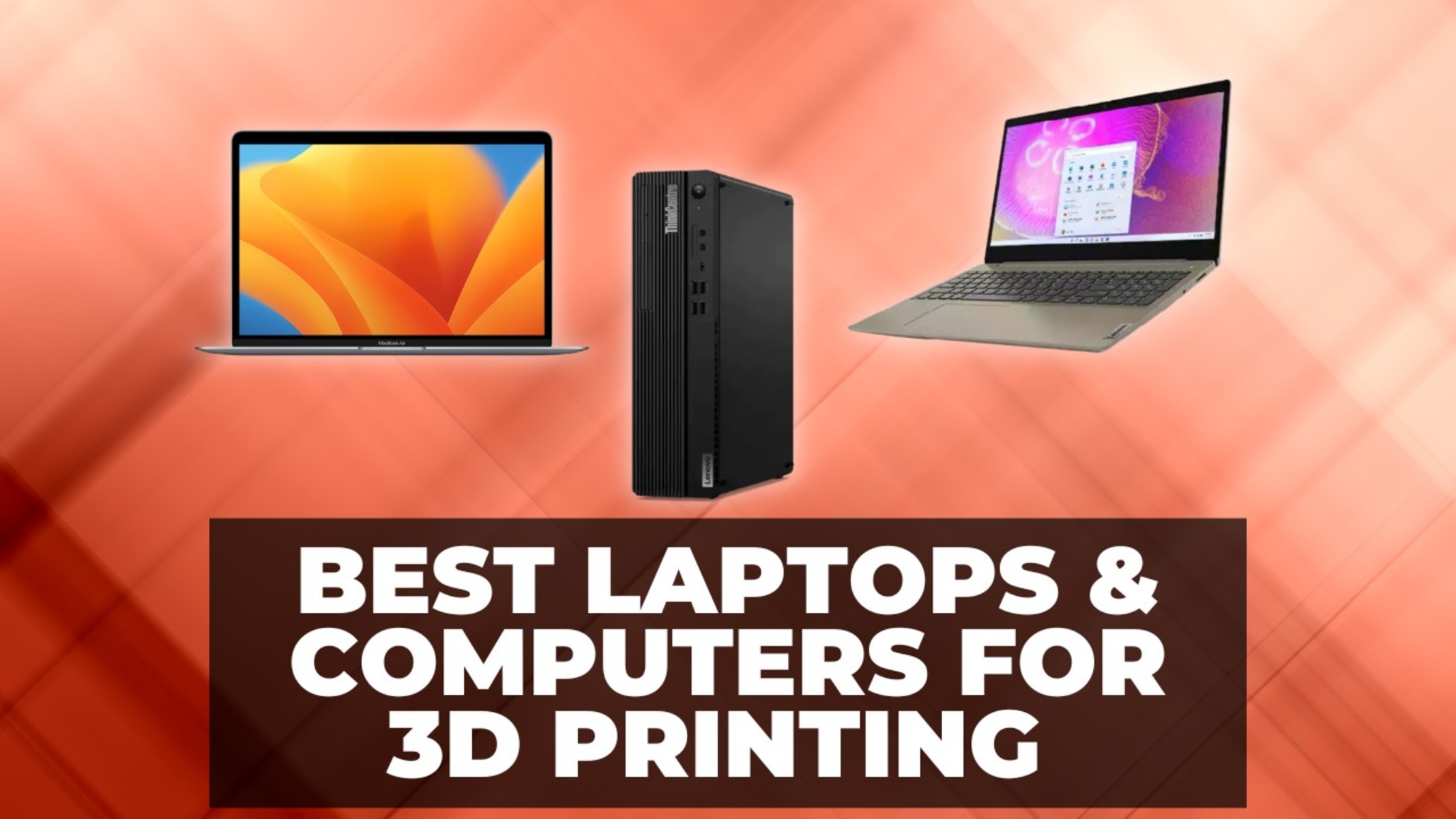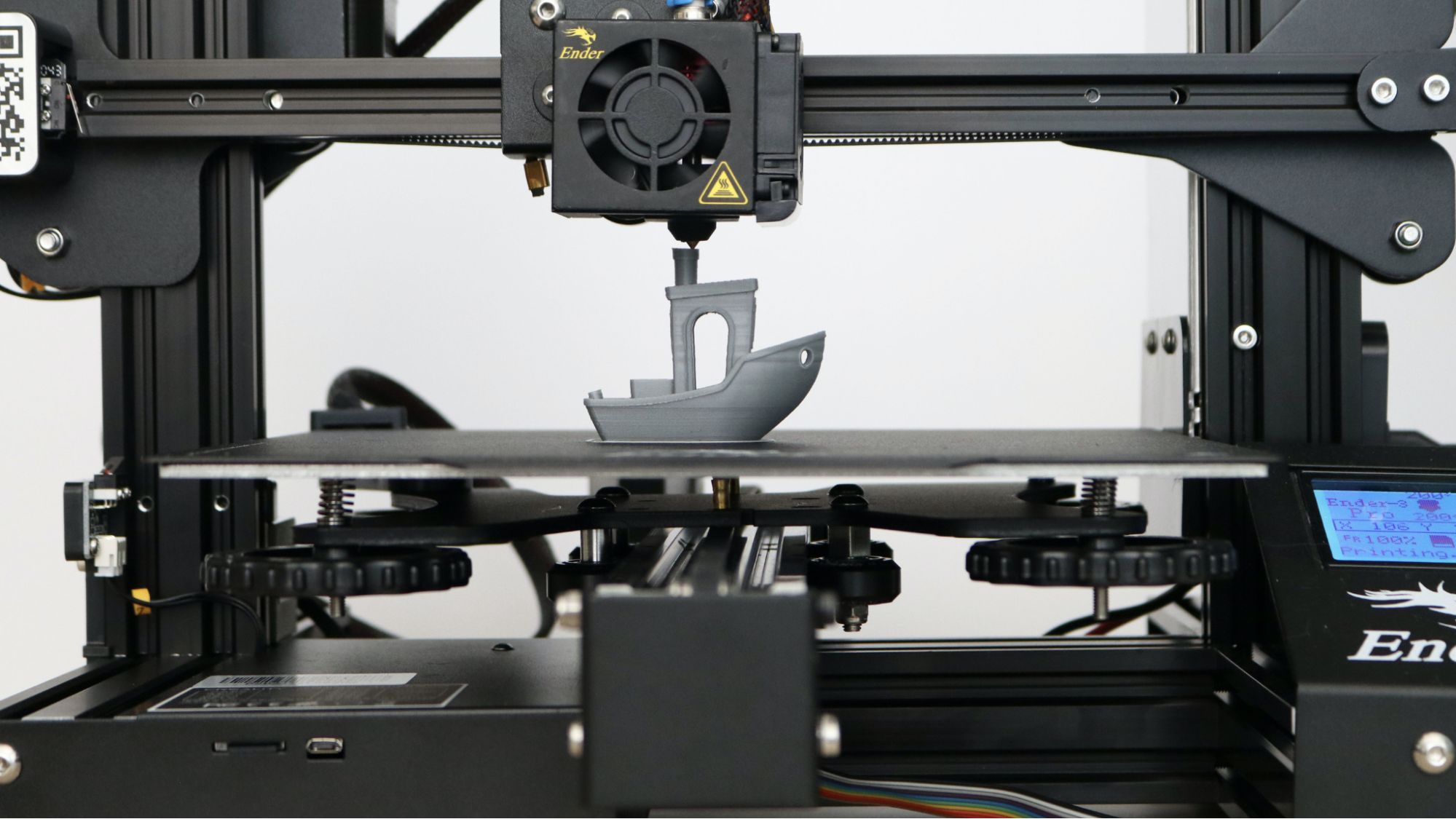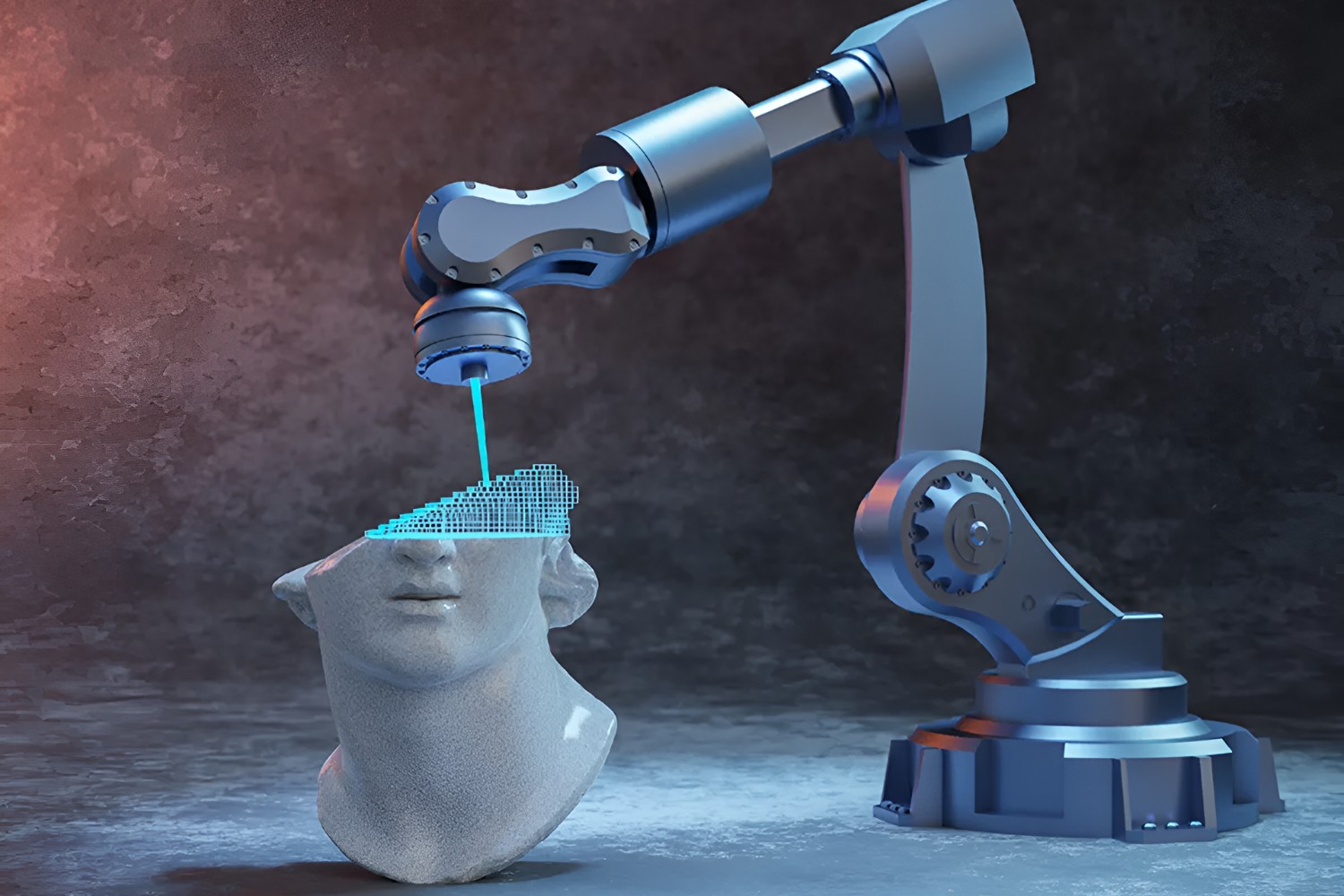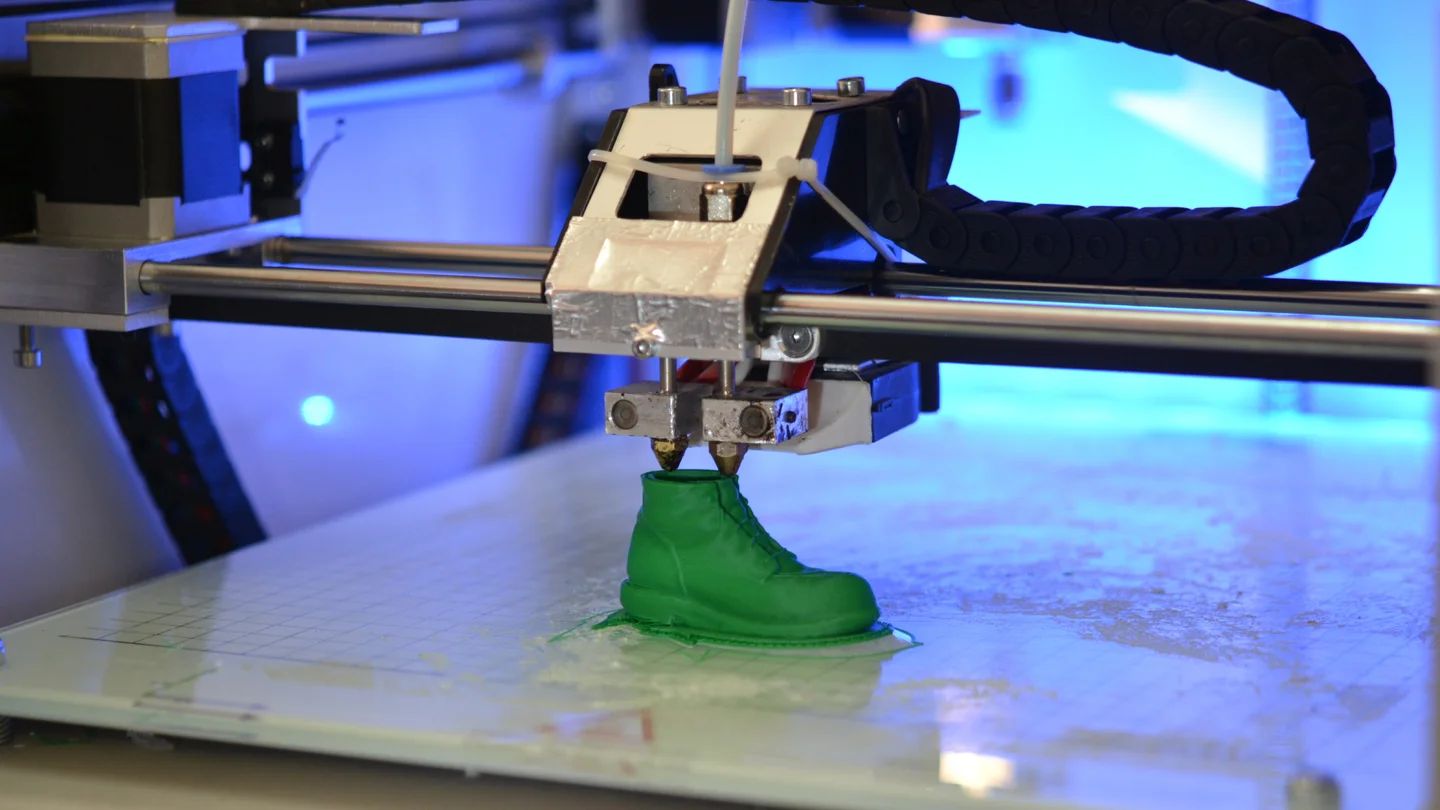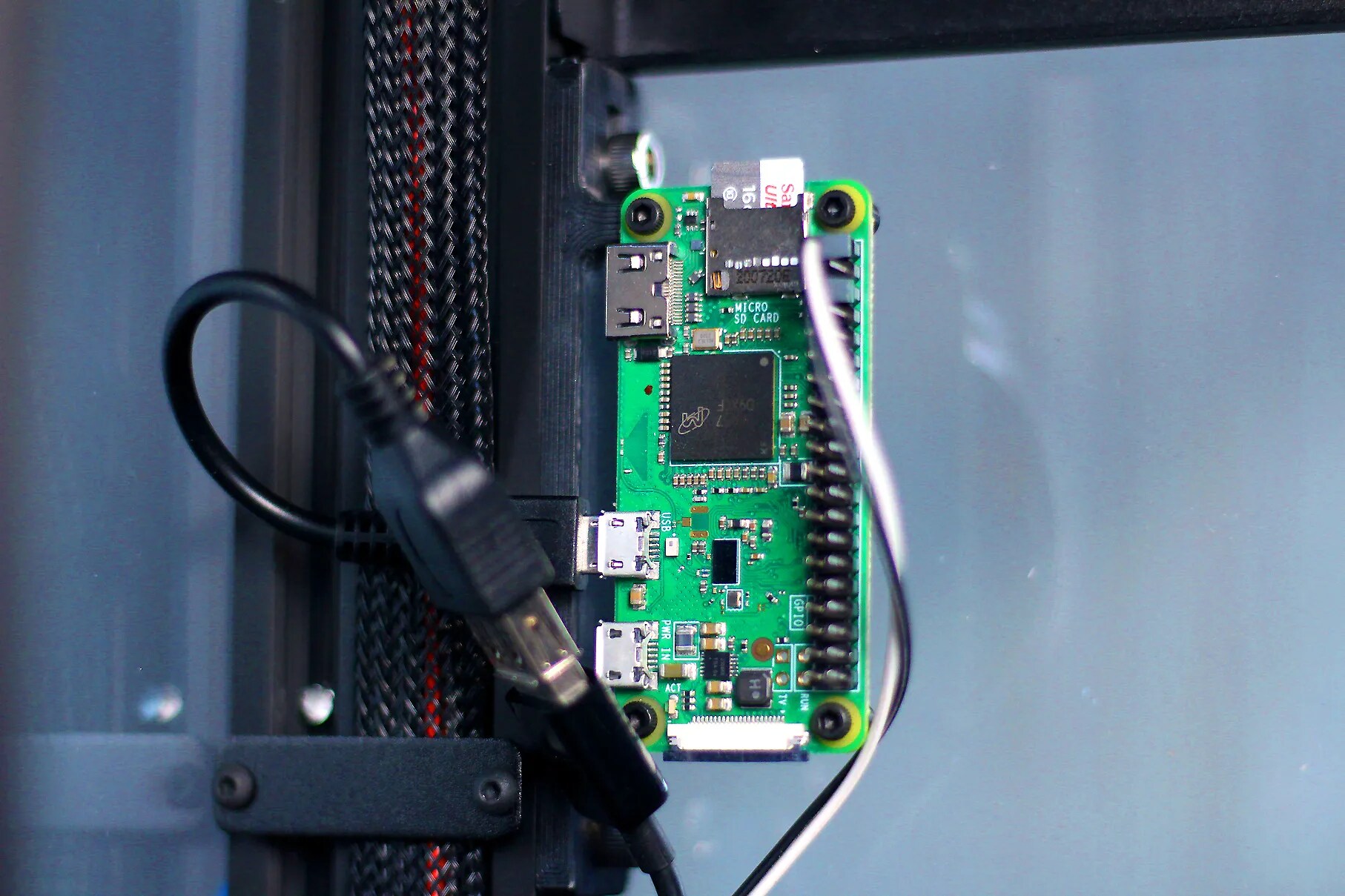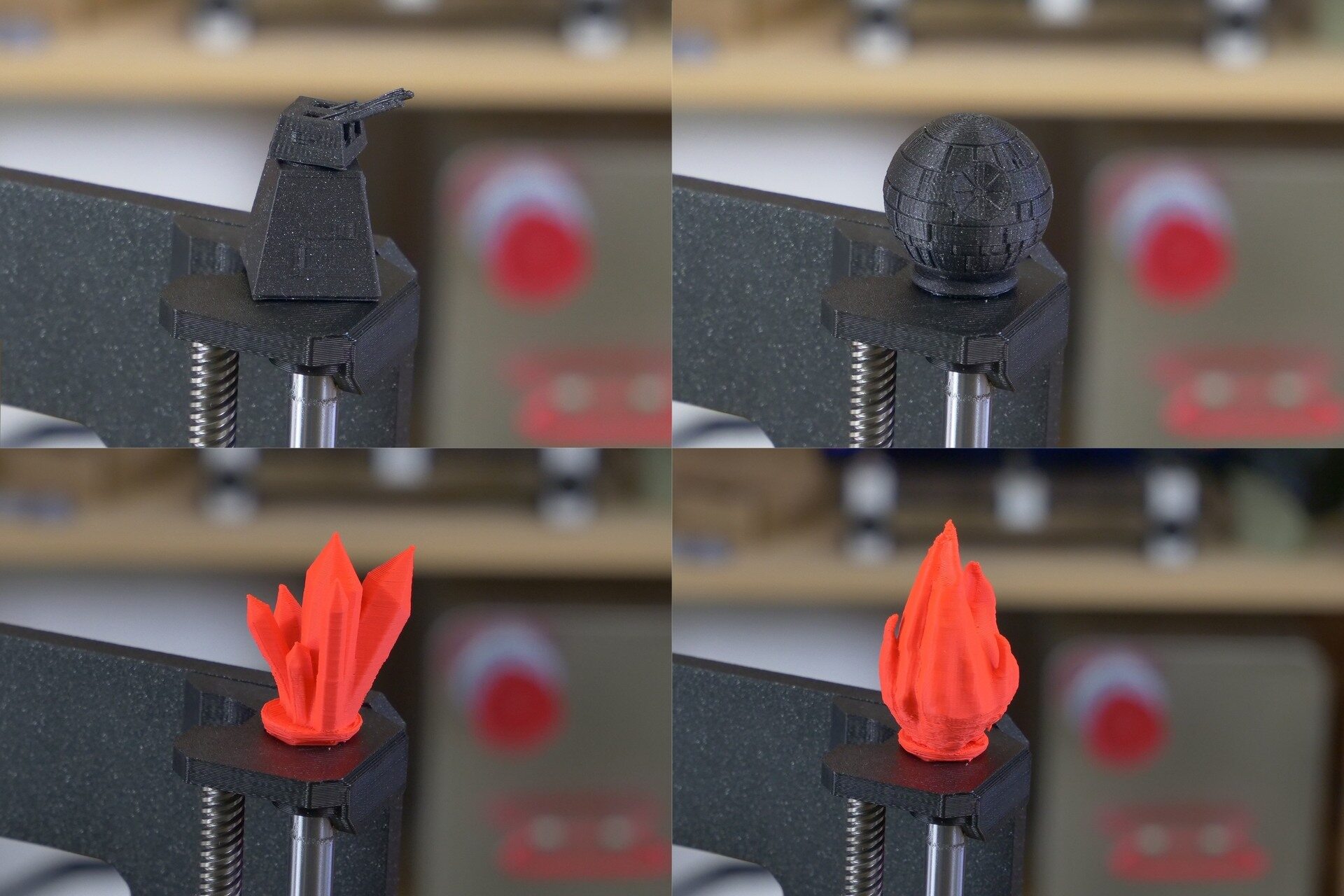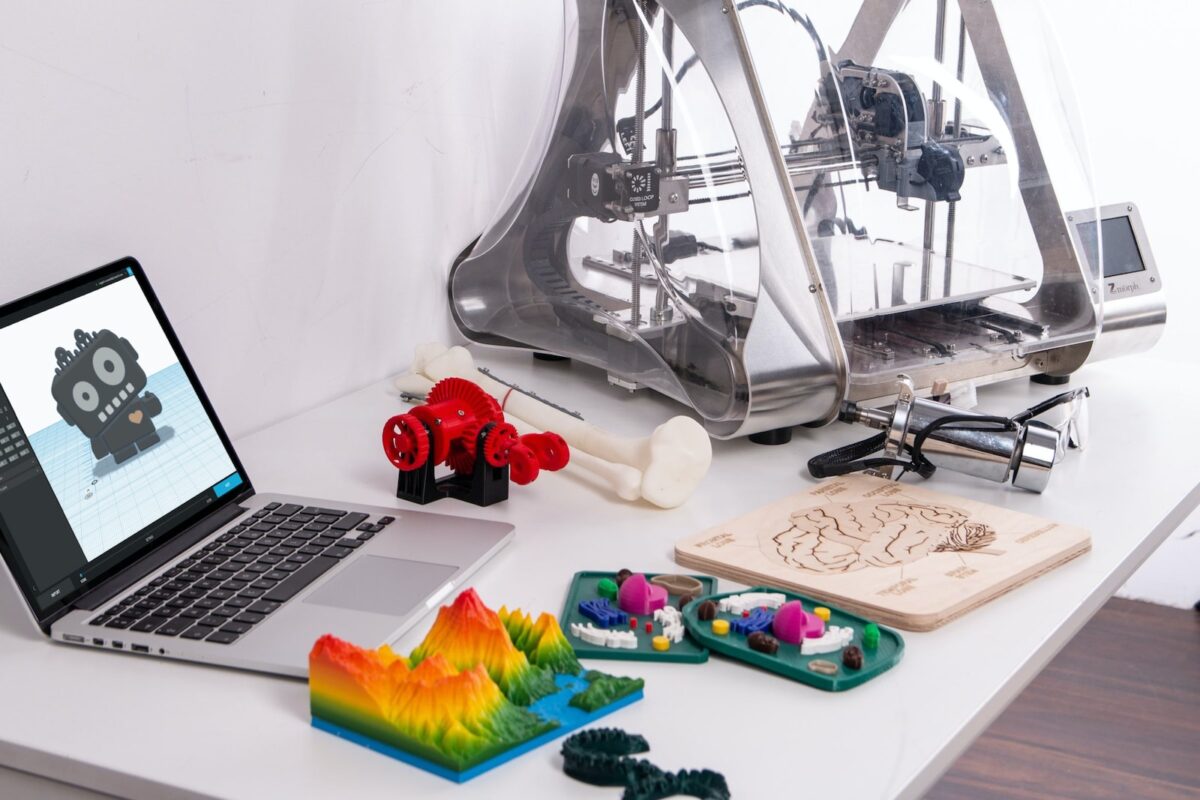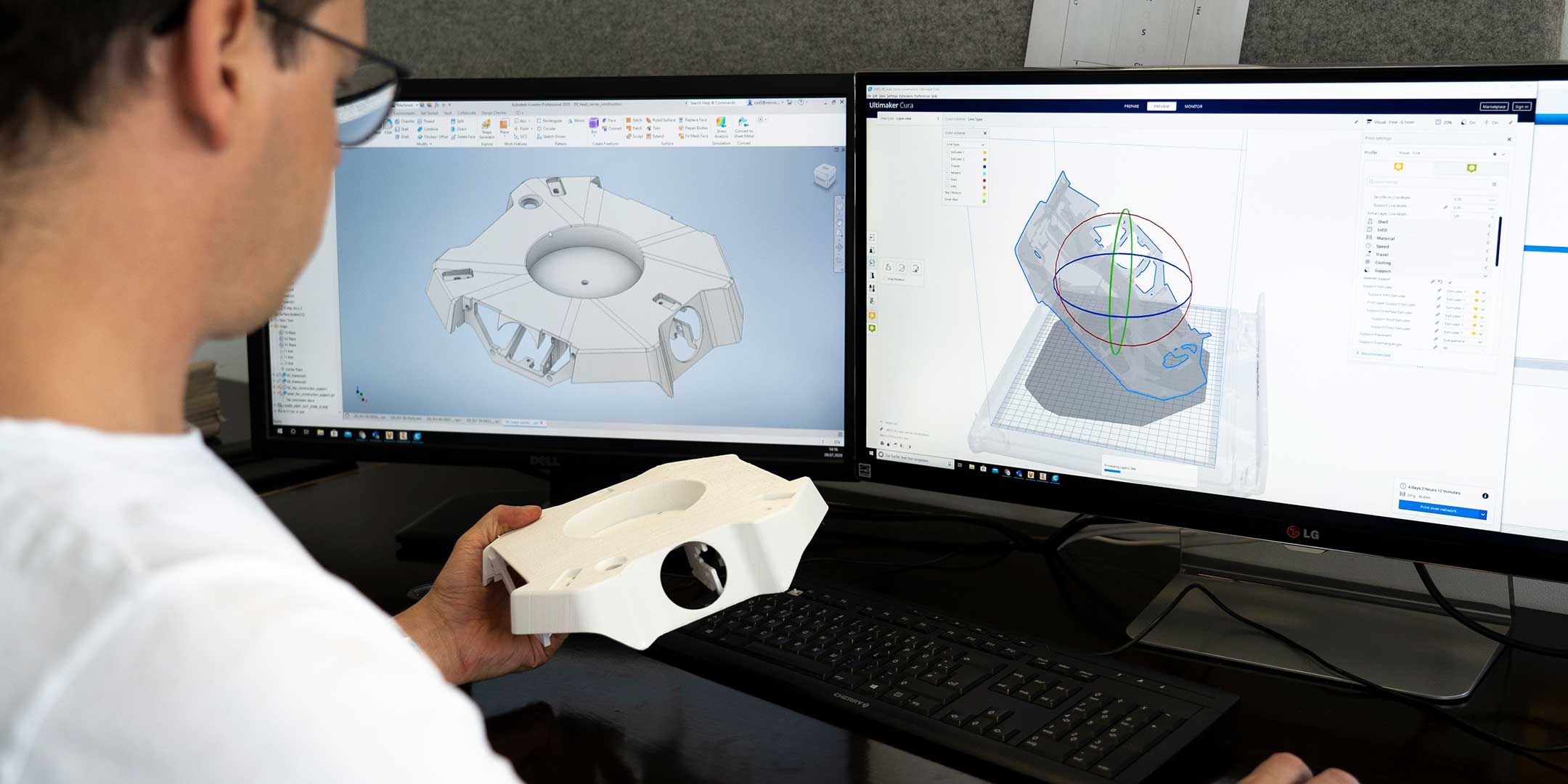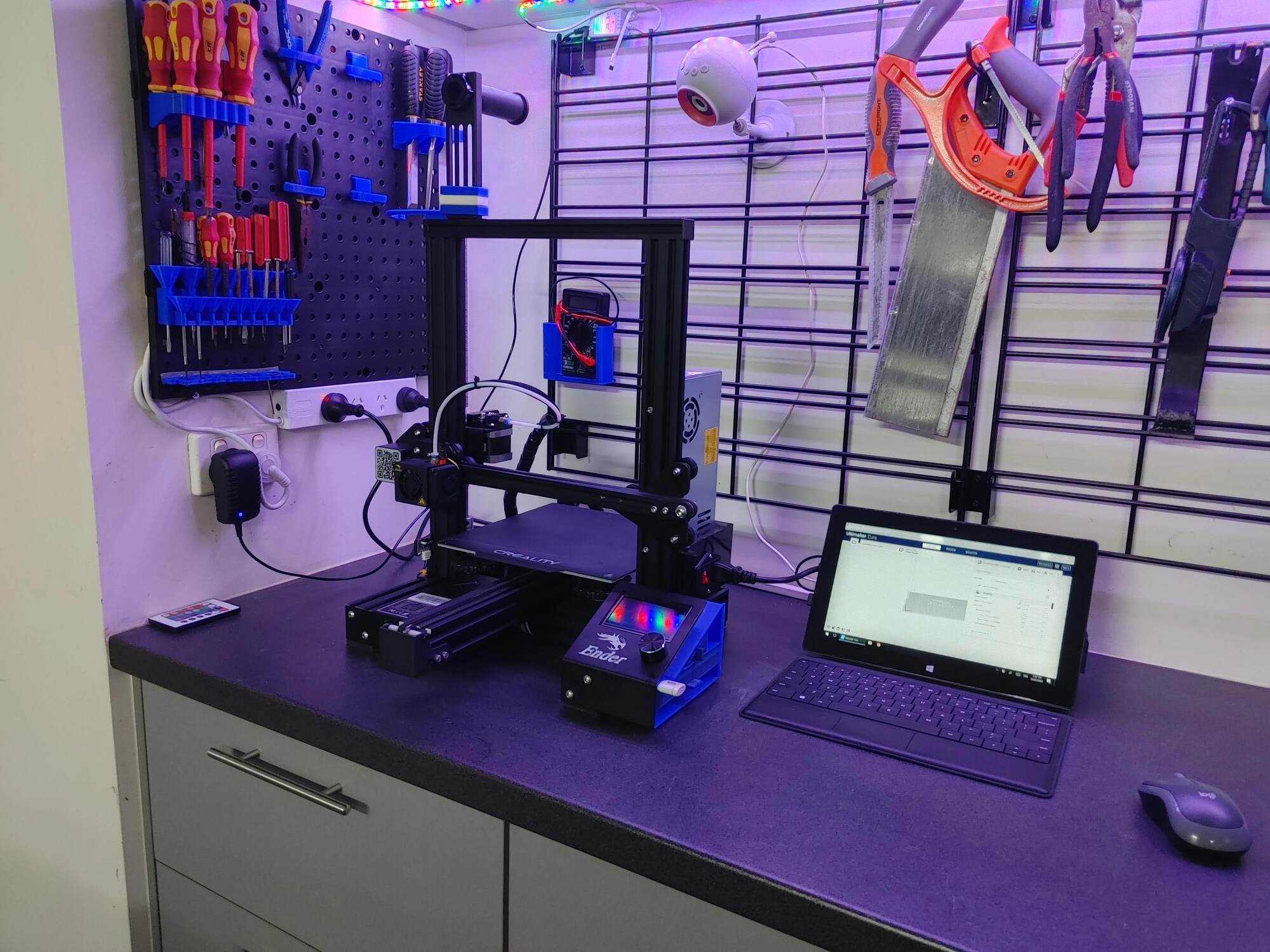Introduction
Welcome to the world of 3D printing, where you can bring your wildest ideas to life. Whether you are a hobbyist or a professional, having the right computer is essential for a seamless and efficient 3D printing experience. But with so many options available, how do you choose the best computer for 3D printing?
In this article, we will explore the factors to consider when selecting a computer for your 3D printing needs. From the minimum system requirements to the recommended specifications, we will guide you in making an informed decision. Whether you prefer a desktop computer or a laptop, we have got you covered.
When it comes to 3D printing, having a computer that can handle the complex calculations and rendering processes is crucial. Without a suitable computer, you may experience slow performance, longer rendering times, and even compatibility issues. Therefore, it is important to understand the key components that contribute to a 3D printing computer’s performance.
Before we dive into the technical details, let’s take a moment to appreciate the incredible world of 3D printing. From producing intricate designs and prototypes to creating functional objects, 3D printing has revolutionized various industries, including engineering, healthcare, and art. With a 3D printer, you have the power to turn your imagination into reality.
Now, let’s explore the factors you need to consider when choosing the best computer for your 3D printing endeavors. By understanding these factors, you can ensure that your computer is up to the task and optimize your 3D printing experience.
Factors to Consider When Choosing a Computer for 3D Printing
Choosing the right computer for 3D printing can significantly impact your workflow and the quality of your prints. To ensure a smooth and successful 3D printing experience, there are several factors you should consider before making a purchase.
1. Processing Power: 3D printing involves complex calculations, rendering, and slicing processes. It is crucial to have a computer with a powerful processor that can handle these tasks efficiently. Look for a multi-core processor, such as an Intel Core i7 or AMD Ryzen, to ensure fast and reliable performance.
2. Graphics Card: The graphics card, or GPU, plays a vital role in rendering and visualizing 3D models. A dedicated graphics card with a significant amount of VRAM will enhance the performance and speed of your 3D printing software. NVIDIA GeForce or AMD Radeon series cards are reliable choices for 3D printing purposes.
3. RAM: Random Access Memory (RAM) is essential for managing multiple processes simultaneously. A higher amount of RAM, such as 16GB or more, allows for smoother multitasking and faster data transfer. This will improve the overall efficiency of your 3D printing workflow.
4. Storage Space: 3D design files can be large, especially for complex models. Having ample storage space is important to store your design files, software, and other essential applications. Consider a computer with a solid-state drive (SSD) for faster file loading and processing times.
5. Connectivity Options: Ensure that the computer you choose has sufficient USB ports to connect your 3D printer and other peripherals. Additionally, having an ethernet port or Wi-Fi capabilities allows for seamless connectivity to your home or office network.
6. Operating System: While most 3D printing software is compatible with multiple operating systems, it’s essential to choose one that aligns with your needs and preferences. Windows, Mac OS, and Linux are commonly used platforms for 3D printing, each with their own advantages and user interfaces. Consider the software you plan to use and ensure compatibility with your chosen operating system.
7. Budget: Your budget will play a significant role in determining the type of computer you can afford. It is important to strike a balance between your budget and the required specifications for 3D printing. Consider the long-term value of a high-quality computer that can handle future advancements in the 3D printing industry.
By carefully considering these factors, you can choose a computer that meets your specific 3D printing needs. With the right computer, you can fully unlock the potential of your 3D printer and produce high-quality prints with ease.
Minimum System Requirements for 3D Printing
Before diving into the world of 3D printing, it’s important to ensure that your computer meets the minimum system requirements. While these requirements may vary depending on the specific software and printer you’re using, there are some general guidelines to keep in mind.
Processor: A dual-core processor is usually the minimum requirement for most 3D printing software. However, having a quad-core processor or higher will greatly enhance the overall performance and speed of your printing tasks.
Graphics Card: While a dedicated graphics card is not always necessary, it is recommended for a smoother and more efficient 3D printing experience. An entry-level graphics card with at least 2GB of VRAM is usually adequate for most basic 3D printing tasks.
RAM: The amount of RAM you need will depend on the complexity of your 3D models. Generally, 8GB of RAM is the minimum requirement, but having 16GB or more will allow for more efficient multitasking and handling of larger files.
Storage Space: 3D design files can take up a significant amount of storage space, so it’s important to have adequate storage capacity. A minimum of 250GB of available storage is recommended, and if possible, consider using a solid-state drive (SSD) for faster file transfer and loading times.
Operating System: Most 3D printing software is compatible with major operating systems such as Windows, Mac OS, and Linux. Make sure your computer is running a supported operating system and that you have the latest updates installed.
USB Port: A USB port is essential for connecting your 3D printer to your computer. Ensure that your computer has at least one available USB port, and if possible, consider a computer with multiple ports for added convenience.
Internet Connection: While not always necessary, having an internet connection can be beneficial for downloading software updates, accessing online resources, and connecting to cloud-based storage options.
These are the minimum system requirements to get started with basic 3D printing. However, keep in mind that more demanding 3D printing tasks, such as complex designs or large-scale projects, may require higher specifications.
By meeting these minimum requirements, you can ensure that your computer is capable of running 3D printing software efficiently. Remember to check the specific requirements of your chosen software and printer to ensure compatibility and optimal performance.
Recommended Specifications for a 3D Printing Computer
If you want to take your 3D printing to the next level and experience optimal performance, it is recommended to have a computer with higher specifications. These recommended specifications will ensure smoother workflow, faster render times, and the ability to handle more complex 3D models.
Processor: For an enhanced 3D printing experience, consider a computer with a quad-core or higher processor. Processors such as Intel Core i7 or AMD Ryzen 7 are ideal choices, as they offer faster processing speeds and better multitasking capabilities.
Graphics Card: Investing in a dedicated graphics card with at least 4GB of VRAM is highly recommended for more advanced 3D printing tasks. This will help improve rendering speeds, handle complex designs, and provide better visualization of your models. Look for graphics cards such as NVIDIA GeForce GTX or AMD Radeon RX series.
RAM: Increasing the amount of RAM in your 3D printing computer will greatly benefit your workflow. Aim for 16GB or more of RAM, as it will allow for seamless multitasking, smoother rendering, and handling of larger 3D models.
Storage Space: As the complexity of your 3D models increases, so does the file size. It’s recommended to have ample storage space to accommodate your growing library of designs. Consider a computer with at least 500GB of storage, and if possible, opt for a solid-state drive (SSD) to further improve file loading and transfer speeds.
Operating System: Select an operating system that is compatible with your preferred 3D printing software and offers a user-friendly interface. Windows 10, macOS, and popular Linux distributions are commonly used options for 3D printing.
USB Ports: To ensure connectivity with your 3D printer and other peripherals, having multiple USB ports on your computer is advantageous. Consider a computer with at least two or more USB 3.0 ports for faster data transfer speeds.
Internet Connection: Having a stable internet connection is beneficial for accessing online resources, downloading updates, and exploring cloud-based storage options. A high-speed internet connection will improve your overall 3D printing experience.
By opting for a computer with these recommended specifications, you can unlock the full potential of your 3D printer. You will experience faster render times, improved printing accuracy, and the ability to handle more advanced 3D printing projects.
Remember, these recommendations are not exhaustive, and depending on your specific needs and budget, you can choose a computer with even higher specifications. Always check the system requirements of your chosen 3D printing software and consider future advancements in the field to ensure your computer remains capable in the long run.
Best Desktop Computers for 3D Printing
When it comes to 3D printing, a desktop computer offers several advantages over a laptop, including better processing power and more storage options. If you’re looking to invest in a desktop computer specifically for 3D printing, here are some top picks that offer excellent performance and reliability.
1. HP OMEN Obelisk: This desktop powerhouse features a powerful Intel Core i7 or i9 processor, coupled with a high-end graphics card such as NVIDIA GeForce RTX. With ample RAM and storage options, the HP OMEN Obelisk can effortlessly handle complex 3D modeling and rendering tasks.
2. Dell XPS Tower: The Dell XPS Tower is a popular choice among 3D printing enthusiasts. It offers a range of configurations, including Intel Core i7 and i9 processors, dedicated graphics cards, and storage options up to multiple terabytes. The sleek design and reliable performance make it a great option for 3D printing.
3. Lenovo ThinkStation P Series: Built with professionals in mind, the Lenovo ThinkStation P Series offers exceptional performance and reliability. These workstations are powered by Intel Xeon processors and high-end NVIDIA Quadro graphics cards, making them ideal for handling complex 3D printing tasks with ease.
4. MSI Infinite X Plus: The MSI Infinite X Plus is a gaming desktop that also excels in the world of 3D printing. It boasts powerful processors, dedicated graphics cards, and customizable configurations to suit your specific needs. The robust cooling system ensures your computer stays cool even during prolonged printing sessions.
5. Apple iMac Pro: For Mac enthusiasts, the Apple iMac Pro is a top-of-the-line choice. With its stunning Retina 5K display, powerful Intel Xeon processors, and AMD Radeon Pro graphics, it offers excellent performance and seamless integration with Mac-compatible 3D printing software.
These are just a few examples of the best desktop computers for 3D printing. However, it’s important to note that you can also build a custom desktop computer tailored to your specific requirements. By selecting high-quality components and ensuring compatibility, you can create a 3D printing powerhouse that meets your exact needs.
When choosing a desktop computer for 3D printing, consider factors such as processing power, graphics card capability, storage capacity, and RAM. These factors will determine the overall performance and reliability of your 3D printing workflow.
Additionally, keep in mind that technology advances rapidly, so always stay updated with the latest releases and specifications. This will help you make an informed decision and ensure that your desktop computer remains capable of handling future advancements in 3D printing technology.
Best Laptops for 3D Printing
If portability is a priority for you or if you prefer the flexibility of working on the go, a laptop can be a great choice for 3D printing. When selecting a laptop for this purpose, you’ll want to consider factors such as processing power, graphics capabilities, and portability. Here are some of the best laptops for 3D printing:
1. Dell XPS 15: The Dell XPS 15 offers a balance of power and portability. Equipped with Intel Core i7 or i9 processors, dedicated NVIDIA graphics cards, and up to 64GB of RAM, it can handle demanding 3D printing tasks with ease. Its vibrant display and slim design make it a popular choice among 3D printing enthusiasts.
2. ASUS ROG Zephyrus G14: For those looking for power in a compact package, the ASUS ROG Zephyrus G14 is a top pick. It features AMD Ryzen processors and NVIDIA GeForce RTX graphics, delivering excellent performance for 3D modeling and printing. Its lightweight design and long battery life make it a great choice for on-the-go printing.
3. HP Spectre x360: The HP Spectre x360 combines style, performance, and versatility. It offers powerful Intel Core i7 or i9 processors, dedicated NVIDIA graphics, and a convertible design that allows you to switch between laptop and tablet modes. Its high-resolution display and reliable performance make it suitable for 3D printing tasks.
4. Lenovo ThinkPad P Series: Designed for professionals, the Lenovo ThinkPad P Series laptops are known for their robust performance and durability. With options for Intel Core i7 or Xeon processors, NVIDIA Quadro graphics, and ample RAM, these laptops can handle complex 3D printing tasks effortlessly.
5. MacBook Pro: Apple’s MacBook Pro is a popular choice among creative professionals, including 3D printing enthusiasts. The latest models feature powerful Intel processors, AMD Radeon Pro graphics, and a brilliant Retina display. The macOS ecosystem offers seamless integration with 3D printing software.
When choosing a laptop for 3D printing, it’s important to consider the specific requirements of your preferred 3D printing software. Ensure that the laptop’s specifications meet or exceed the software’s recommended system requirements.
Additionally, keep in mind factors such as battery life, connectivity options, and storage capacity to suit your needs. A laptop with fast solid-state storage and a sufficient number of USB ports will facilitate smoother file transfers and connections to your 3D printer.
Remember that laptops, while portable, may not offer the same level of upgradability as desktop computers. Therefore, it’s essential to choose a laptop with specifications that can meet your needs in the long run.
With these top laptop choices for 3D printing, you can enjoy the flexibility of working from anywhere while experiencing the power and performance required for successful 3D printing projects.
Importance of Graphics Card for 3D Printing
In the world of 3D printing, the graphics card, or GPU (Graphics Processing Unit), plays a crucial role in the overall performance and quality of your prints. It is responsible for rendering, visualization, and handling the complex calculations required for 3D modeling and printing. Here are some reasons why the graphics card is important for 3D printing:
1. Rendering Speed: 3D printing involves rendering three-dimensional models from digital designs. A powerful graphics card can significantly speed up the rendering process, allowing you to visualize your designs quickly and efficiently. This is particularly important when working with intricate and complex models.
2. Model Complexity: As the complexity of your 3D models increases, so does the demand on your graphics card. Complex designs with intricate details may require more processing power to handle the calculations involved in rendering and displaying the model accurately. A capable graphics card can handle these demands, ensuring smooth performance throughout the printing process.
3. Visualization: A high-quality graphics card improves the visual experience of your 3D models. It enables accurate and realistic representation of colors, textures, and lighting effects, allowing you to preview your prints with precision. This visualization capability helps you identify and correct any potential issues or imperfections before printing.
4. Compatibility with 3D Printing Software: Some 3D printing software leverages the computing power of the graphics card to enhance its functionalities. Certain features, such as real-time previews, advanced rendering options, and GPU-accelerated algorithms, rely on a capable graphics card. Therefore, having a compatible graphics card ensures a seamless experience with your preferred 3D printing software.
5. Multi-Tasking: A powerful graphics card allows for better multitasking capabilities. It allocates resources efficiently, allowing you to simultaneously work on your 3D models while running other applications or tasks in the background. This means you can continue designing or editing your models without experiencing lag or interruptions.
6. Iterative Design: Iterative design is an essential part of the 3D printing process, where you refine and optimize your designs through multiple iterations. A robust graphics card enables faster iterations by quickly rendering and updating the changes you make to your models. This accelerates the design process, allowing you to achieve desirable results more efficiently.
In summary, the graphics card is a critical component for 3D printing, impacting rendering speed, model complexity handling, visualization capabilities, software compatibility, multitasking, and iterative design. Investing in a capable graphics card will ensure smooth performance, accurate visual representation, and an overall enhanced 3D printing experience.
Importance of RAM for 3D Printing
When it comes to 3D printing, having sufficient RAM (Random Access Memory) in your computer is crucial. RAM plays a significant role in handling the complex calculations and data processing required for 3D modeling and printing. Here are some reasons why RAM is important for 3D printing:
1. Multitasking and Efficiency: 3D printing software often requires running multiple processes simultaneously, such as rendering, slicing, and previewing. Ample RAM allows your computer to handle these tasks efficiently, reducing the potential for slowdowns and lag. With sufficient RAM, you can multitask seamlessly, working on your models while the software continues to process in the background.
2. Handling Large and Complex Files: 3D models can be quite large, especially those with intricate designs or high levels of detail. Insufficient RAM can hinder your computer’s ability to handle and manipulate these large files. With more RAM, you can easily load, edit, and manipulate complex models without experiencing delays or freezing.
3. Faster Rendering and Previewing: Rendering is a processor-intensive task, but having enough RAM helps accelerate the process. With ample memory, your computer can quickly store and access the data required for rendering, resulting in faster render times. Additionally, having more RAM allows for faster model previewing, allowing you to make necessary adjustments and visualize the final print more efficiently.
4. Handling High-Resolution Textures and Materials: 3D printing often involves working with high-resolution textures and materials to achieve realistic and detailed prints. These textures require additional memory to store and process. With more RAM, you can work with high-quality textures and materials without compromising performance.
5. Supporting Future Upgrades: RAM requirements in the 3D printing industry continue to grow as software and models become more complex. By investing in a computer with sufficient RAM, you future-proof your setup and ensure smooth operation as new 3D printing advancements emerge. This allows you to adapt to new software versions and handle larger and more intricate models in the future.
It is important to note that the amount of RAM you require will depend on the complexity of your 3D models and the specific software you are using. While a minimum of 8GB is typically recommended, having 16GB or more of RAM will provide better performance and allow for smoother multitasking.
In summary, RAM is a vital component for a seamless and efficient 3D printing experience. Adequate RAM allows your computer to handle complex calculations, manipulate large files, and render models quickly. By ensuring you have enough RAM, you can optimize your workflow, work with high-resolution textures, and future-proof your 3D printing setup.
The Role of Processor in 3D Printing
The processor, also known as the central processing unit (CPU), plays a significant role in the performance and efficiency of 3D printing. It is responsible for executing the complex calculations required for rendering, slicing, and handling the intricate details of 3D models. Here are some key aspects that highlight the importance of the processor in 3D printing:
1. Processing Speed and Efficiency: The processor’s clock speed determines how quickly it can execute instructions. 3D printing involves numerous calculations and computations when rendering and slicing models. A faster processor with a higher clock speed can perform these tasks more efficiently, reducing overall processing time and enhancing productivity.
2. Handling Complex and Large-Scale Models: As 3D models become more intricate and detailed, they require increased computing power to handle. A powerful processor can efficiently process the complex geometry, textures, and materials of large-scale 3D models. It ensures smooth navigation, editing, and rendering, allowing for precise control over the final print.
3. Multitasking Capabilities: 3D printing often involves running multiple processes simultaneously, such as rendering, file slicing, and model previewing. A processor with multiple cores or threads enables efficient multitasking, ensuring that these processes can run smoothly without causing delays or interruptions. This allows you to continue working on other tasks while the 3D printing software handles the necessary calculations in the background.
4. Compatibility with 3D Printing Software: Certain 3D printing software leverages the power of the processor to enhance various functionalities. For instance, advanced rendering techniques, complex geometry calculations, or optimization algorithms rely on a powerful processor to deliver optimal results. Therefore, using a compatible processor ensures seamless integration with the software and maximizes its capabilities.
5. Future-Proofing: Investing in a high-quality processor provides longevity to your 3D printing setup. As technology evolves and software requires more processing power, a powerful processor will keep your system up to date for future 3D printing advancements. It ensures that your computer remains capable of handling upcoming software features and increasingly complex print projects.
When choosing a processor for 3D printing, consider factors such as clock speed, number of cores, and cache size. Processors with higher clock speeds and multiple cores, such as Intel Core i7 or AMD Ryzen 7 series, are often ideal for 3D printing applications. It’s recommended to select a processor that aligns with the requirements of your preferred 3D printing software and offers sufficient processing power for your unique printing needs.
In summary, the processor plays a crucial role in the speed, precision, and performance of 3D printing. It determines how efficiently your computer can handle complex calculations, render intricate models, and execute tasks simultaneously. By choosing a powerful and compatible processor, you can optimize your 3D printing workflow, handle large-scale models, and future-proof your system for upcoming advancements in the field.
Choosing Between Windows, Mac, or Linux for 3D Printing
When it comes to 3D printing, choosing the right operating system for your computer is an important decision. Each operating system – Windows, Mac, and Linux – has its own strengths and considerations that can impact your 3D printing experience. Here are some factors to consider when choosing between them:
1. Software Compatibility: The availability of 3D printing software and its compatibility with your chosen operating system is a crucial factor. Windows has the widest range of compatible software options, as it is the most commonly used operating system for 3D printing. However, Mac and Linux also offer a variety of software solutions, especially for open-source platforms and specific 3D printing applications.
2. Ease of Use: Windows has a user-friendly interface that is widely recognized and easy to navigate. It offers extensive support and a large user community, which can be beneficial for beginners. Mac operating system, known as macOS, is also known for its user-friendly interface and intuitive design. Linux distributions, however, may require more technical knowledge and familiarity with the command line interface for configuration and software installation.
3. Stability and Security: Mac and Linux are often considered more stable and secure compared to Windows. They have built-in security features and are less susceptible to viruses and malware. However, Windows has made significant improvements in terms of stability and security over the years and continues to be a reliable choice for 3D printing.
4. Hardware Compatibility: Windows offers a wide range of hardware options and compatibility with various 3D printers, scanners, and peripherals. Mac systems, on the other hand, offer excellent compatibility with specific hardware and are renowned for their integration capabilities. Linux distributions, being open-source, also have a wide range of hardware compatibility, allowing for customization to suit specific needs.
5. Customization and Open-Source Support: Linux distributions, such as Ubuntu or Fedora, are known for their customization options and robust open-source community. This can be beneficial for advanced users who prefer total control and customization over their 3D printing setup. Windows and Mac, while less customizable, offer a wide range of applications, tools, and support from their respective communities.
Ultimately, the choice of operating system for 3D printing depends on your personal preferences, familiarity, and specific requirements. Windows is a popular choice due to its wide software compatibility and user-friendly interface. Mac is known for its seamless integration and stability. Linux offers extensive customization and open-source support.
Before making a decision, consider the specific 3D printing software you plan to use, your hardware compatibility needs, and the level of customization and control you desire. Whichever operating system you choose, ensure that it meets the system requirements of your 3D printing software and provides a stable and intuitive platform for your printing endeavors.
Conclusion
Choosing the best computer for 3D printing is essential for a seamless and successful printing experience. By considering factors such as processing power, graphics card capability, RAM, storage space, and operating system compatibility, you can ensure that your computer meets the demands of 3D printing software and handle the complexity of your designs.
For desktop computers, options such as the HP OMEN Obelisk, Dell XPS Tower, and Lenovo ThinkStation P Series offer high performance and reliability. These computers come equipped with powerful processors, dedicated graphics cards, ample RAM, and sufficient storage options.
For those looking for portability, laptops like the Dell XPS 15, ASUS ROG Zephyrus G14, and HP Spectre x360 provide a balance between power and mobility. These laptops offer fast processors, dedicated graphics, and ample RAM, making them suitable for 3D printing on the go.
The graphics card and RAM are vital components for 3D printing. A capable graphics card ensures fast rendering, accurate visualization, and compatibility with 3D printing software. Ample RAM allows for smooth multitasking, efficient handling of large, complex files, and faster rendering times.
When it comes to choosing an operating system for 3D printing, consider factors such as software compatibility, ease of use, stability, hardware compatibility, and customization options. Windows, Mac, and Linux all have their advantages, so choose the one that suits your needs, familiarity, and requirements.
Remember to stay updated with the latest technology advancements and ensure your computer remains capable of handling future developments in the 3D printing industry. By choosing the right computer, you can unlock the full potential of your 3D printer, create high-quality prints, and explore endless possibilities within the realm of 3D printing.







